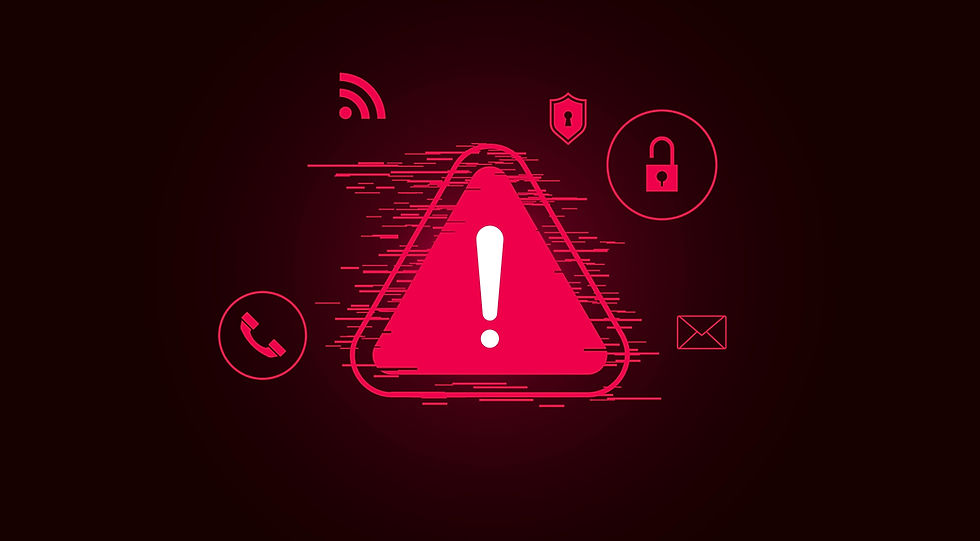The Role of Identity and Access Management in Zero Trust Security
- Joel Proulx
- Aug 19, 2024
- 4 min read
Updated: Feb 12

The launch of remote work to the mainstream and the move of digital assets to the cloud has forced heavy investments in network security. Technology has become a double-edged sword, reinforcing businesses' infrastructures yet equipping hackers with advanced tools to perform sophisticated cyberattacks. Learn the role of zero trust implementation in this dynamic and how organizations are leaning into it to protect their data in risky cloud-based environments.
Understanding Zero Trust Principles
The figures for data leaks continue to trend upward. In 2022, about 30% of web users experienced phishing, and over 1.35 million cases of them happened worldwide. In 2023, the global average cost of data breaches hit $4.45 million, which is 15% higher than the last three years.
Brands use zero trust security to fortify themselves. Its main principle is "never trust, always verify." It implies no digital activity should be trusted without verification and all access to corporate assets should go through continuous authentication. The goal of this cybersecurity paradigm is to protect data, services and networks from catastrophic, unauthorized access.
Importance of Identity and Access Management in Zero Trust
Identity and access management (IAM) and zero trust go hand in hand in safeguarding the company's digital assets. The zero trust protocol is only successful if the IAM systems are strictly implemented. In a zero-trust model, identity becomes the primary security parameter to minimize the risk of illegal access and potential breaches.
Before, companies could keep their resources behind a firewall and remain complacent. However, this is less likely to be applicable now that remote working has become run of the mill. In 2022, 27.5% — or 2.5 million of the U.S. workforce — were working remotely.
Remote employees access their employer’s files, data and apps from their homes or cafes, sometimes using unsecured networks. This is where IAM is beneficial in a zero-trust architecture.
IAM involves two steps in managing access controls:
Authentication: The system determines the identity of the individual accessing the online assets using multiple authentication methods. They can’t gain access if they fail.
Authorization: The authenticated person gets permission to access specific files, networks and systems.
Two-factor authentication is an IAM method requiring the person accessing the data to present two types of validation. It can thwart 99% of identity theft and provide a solid security layer to the corporation’s assets. In brief, IAM is a critical factor for the success of the zero trust model.
Implementing IAM Solutions To Support Zero Trust
Implementing IAM best practices can strengthen network security without any doubt. Here are approaches enterprises can explore when enforcing zero trust:
Multi-factor authentication: The user is only given access after providing two or more authentication mechanisms.
Single sign-on: It’s a technology that enables access to multiple SaaS applications by logging in to a single page.
Role-based access control (RBAC): It's a method that restricts permission to certain company assets based on a person's role in the organization.
Attribute-based access control: It's similar to RBAC, except that approvals are granted based on attributes or tags.
User provisioning and deprovisioning processes: It’s an access management practice that involves creating, updating and deleting user accounts in applications. It improves security and streamlines access management.
Practices for Managing Identities and Access Controls
Businesses can boost their zero trust architecture with these strategies.
1. Training Employees on Security Policies
The team can mitigate risks if they receive education on how to do so. Training fosters a culture of security awareness within your organization. An approach like interactive training — where you immerse employees in a role-playing exercise and provide real-world examples — will allow them to get better at identifying red flags and the best practices to block them.
2. Define Access Based on the Least Privilege Principle
Ensure users have the minimum access to software and data to do their job. Don’t extend entry to files unrelated to their work.
3. Integrate Multi-Factor Authentication
It helps fortify security protocols. Use passwords, biometrics or security tokens to strengthen access control.
4. Leverage Role-Based Access Control
Grant data access according to the person’s responsibilities. If they handle critical client information, ensure they know how to protect it.
5. Enable Continuous Monitoring and Adaptive Access Controls
Implementing this measure lets you adjust access privileges instantly when risks are detected. You can minimize damage in case a breach occurs.
6. Execute Policy Orchestration
Coordinate security regulations across all your network systems and platforms for universal enforcement. Remote staff must be aware of the do's and don'ts of access controls to safeguard against leaks wherever they are.
Boost Your Security Measures
Your network infrastructure is constantly under threat. Attackers will persistently attempt to infiltrate it until it breaks down and they gain access to your critical information. Lack of employee awareness and network flaws can increase the possibility of a successful attack.
Partner with Premcom to fortify your security configurations and implementations. It offers various security services to halt these threats on your network and data.



